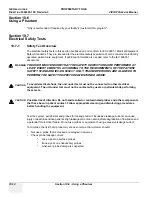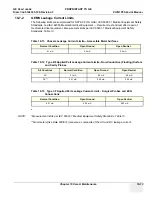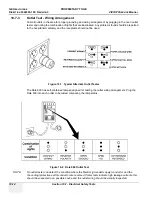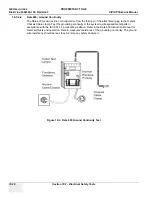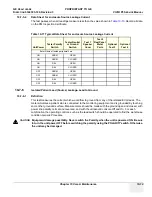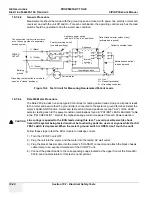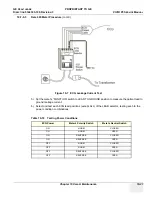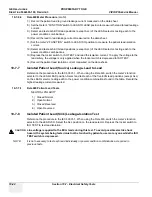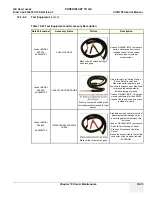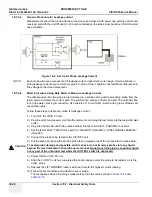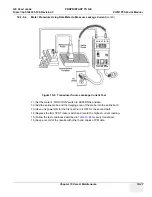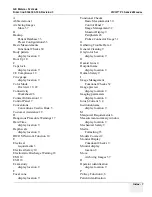
GE H
EALTHCARE
PROPRIETARY TO GE
D
IRECTION
5344303-100, R
EVISION
3
VIVID P3 S
ERVICE
M
ANUAL
10-26
Section 10-7 - Electrical Safety Tests
10-7-9-3
Generic Procedure for Leakage current
Measurements should be made with the ground open and closed, with power line polarity normal and
reversed, and with the unit Off and On. For each combination, the probe must be active to find the worst
case condition.
NOTE:
Each probe will have some amount of leakage current, dependent on its design. Small variations in
probe leakage currents are normal from probe to probe. Other variations will result from differences in
line voltage and test lead placement.
10-7-9-4
Meter Procedure Using Dale Meter to Measure Leakage Current
The ultrasound probe’s imaging area is immersed in a solution along with a grounding probe from the
test meter to complete the current path. The solution is a mixture of water and salt. The salt adds free
ions to the water, making it conductive. Use mixture of 1 Litre of H2O (water) with 9 grams of table salt,
mixed thoroughly.
Follow these steps to test each probe for leakage current:
1.) Turn OFF the VIVID P3 unit.
2.) Plug the unit’s mains power cord into the test meter, and plug the test meter into the tested AC wall
outlet.
3.) Plug the Chassis Ground Probe (saline probe) into the test meter's “CHASSIS” connector.
4.) Set the test meter's “FUNCTION” switch to “CHASSIS” (Dale 600) or "ENCLOSURE LEAKAGE"
(Dale 601).
5.) Connect the probe to be tested to the VIVID P3 unit.
6.) Put the saline probe and the probe’s probe face (imaging area of the probe) into the saline bath..
7.) Power ON the VIVID P3 unit.
8.) After the VIVID P3 unit has completed the boot process, select the probe to be tested so it is the
active probe.
9.) Depress the LIFT GROUND rocker switch and record the highest current reading.
10.)Follow the test conditions described for every probe.
The test passes when all readings measure less than the values shown in
and
Figure 10-8 Set Up for Probe Leakage Current
CAUTION
To avoid probe damage and possible electric shock, do not immerse probes into any liquid
beyond the level indicated in the probe users manual. Do not touch the probe, conductive liquid
or any part of the unit under test while the ISO TEST switch is depressed.
Saline

